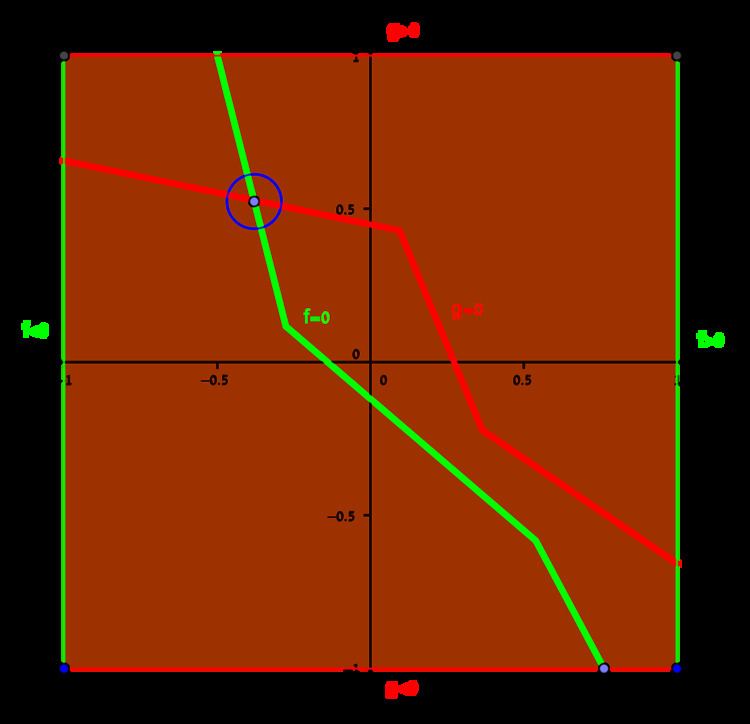 | ||
In mathematics, the Poincaré–Miranda theorem is a generalization of the intermediate value theorem, from a single function in a single dimension, to n functions in n dimensions. It says as follows:
Contents
The theorem is named after Henri Poincaré, who conjectured it in 1883, and Carlo Miranda, who in 1940 showed that it is equivalent to the Brouwer fixed-point theorem.
Intuitive description
The picture on the right shows an illustration of the Poincaré–Miranda theorem for n = 2 functions. Consider a couple of functions (f,g) whose domain of definition is the [-1,+1]2 square. The function f is negative on the left boundary and positive on the right boundary (green sides of the square), while the function g is negative on the lower boundary and positive on the upper boundary (red sides of the square). When we go from left to right along any path, we must go through a point in which f is 0. Therefore, there must be a "wall" separating the left from the right, along which f is 0 (green curve inside the square). Similarly, there must be a "wall" separating the top from the bottom, along which g is 0 (red curve inside the square). These walls must intersect in a point in which both functions are 0 (blue point inside the square).
Generalizations
The simplest generalization, as a matter of fact a corollary, of this theorem is the following one. For every variable xi, let ai be any value in the range [supxi = 0 fi, infxi = 1 fi]. Then there is a point in the unit cube in which for all i:
The this statement can be reduced to the original one by a simple translation of axes,
where
